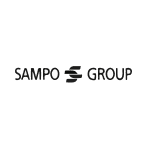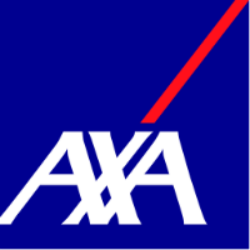IAFNF

iA Financial Corporation Inc.
IAFNF
(2.0)91,95 USD
0.78% ROA
13.73% ROE
14.52x PER
10.679.414.697,96 USD
20.29% DER
2.84% Yield
6.85% NPM
iA Financial Corporation Inc. Stock Analysis
iA Financial Corporation Inc. Fundamental Analysis
Fundamental analysis in stock investing is like studying the foundation of a house before buying it. It involves looking at a company's financial health, like its earnings, assets, and debts, to determine if it's a good investment based on its fundamental strength and potential for growth.
| # | Analysis | Rating |
|---|---|---|
| 1 |
DER
The stock has a low debt to equity ratio (27%), which means it has a small amount of debt compared to the ownership it holds |
|
| 2 |
ROE
ROE in an average range (12.69%) suggests satisfactory profitability and decent utilization of shareholders' equity. |
|
| 3 |
ROA
The stock's ROA (1.03%) shows that it's doing a pretty good job at making money from its assets, making it a solid choice to invest and earn steady profits. |
|
| 4 |
PBV
The stock's PBV ratio (1.24x) reflects a fair valuation, making it an attractive option for investors seeking balanced opportunities. |
|
| 5 |
Graham Number
The Graham number calculation reveals that this company's stock price is potentially underestimated, implying that it may be a promising investment option. |
|
| 6 |
Dividend
The company's track record of consistently paying dividends in the last three years highlights its dedication to providing investors with regular income. |
|
| 7 |
Buffet Intrinsic Value
The company's stock shows potential as it is undervalued (1.139) according to Warren Buffett's formula, indicating that its intrinsic value exceeds the market price. |
|
| 8 |
Revenue Growth
Company has experienced no growth in revenue over the past three years, suggesting limited profitability and making it a less desirable investment opportunity. |
|
| 9 |
Net Profit Growth
Throughout the last five years, this company's net profit has remained unchanged, indicating a lack of growth and making it a less favorable investment option. |
|
| 10 |
Assets Growth
Regrettably, this company's revenue has shown no signs of growth over the past three years, suggesting limited potential for returns and making it a less appealing choice. |
|
| 11 |
Dividend Growth
Investors should note the company's stagnant dividend growth over the past three years, indicating limited profitability and potentially diminishing returns. |
iA Financial Corporation Inc. Technical Analysis
Technical analysis in stock investing is like reading the patterns on a weather map to predict future weather conditions. It involves studying past stock price movements and trading volumes to make predictions about where a stock's price might go next, without necessarily looking at the company's financial health.
| # | Analysis | Recommendation |
|---|---|---|
| 1 | Awesome Oscillator | Hold |
| 2 | MACD | Buy |
| 3 | RSI | Hold |
| 4 | Stoch RSI | Sell |
iA Financial Corporation Inc. Price Chart
Financial Statements
Financial statements are like report cards for companies. They show how much money a company makes (income statement), what it owns and owes (balance sheet), and where it spends its money (cash flow statement), helping stock investors understand if a company is healthy and worth investing in.
Income Statements
An income statement for a company is like a scoreboard for its profits and losses. It shows how much money the company made (revenue) and how much it spent to make that money (expenses), helping stock investors see if a company is making a profit or not.
Revenue in stock investing is the total amount of money a company earns from its sales, and it's a key factor that investors consider to assess a company's financial performance and growth potential.
| Year | Revenue | Growth |
|---|---|---|
| 1998 | 598.500.000 | |
| 1999 | 2.820.400.000 | 78.78% |
| 2000 | 2.926.300.000 | 3.62% |
| 2001 | 2.712.900.000 | -7.87% |
| 2002 | 2.882.700.000 | 5.89% |
| 2003 | 3.351.700.000 | 13.99% |
| 2004 | 3.696.800.000 | 9.34% |
| 2005 | 4.029.400.000 | 8.25% |
| 2006 | 4.937.900.000 | 18.4% |
| 2007 | 4.971.000.000 | 0.67% |
| 2008 | 4.465.000.000 | -11.33% |
| 2009 | 5.815.000.000 | 23.22% |
| 2010 | 6.769.000.000 | 14.09% |
| 2011 | 8.037.000.000 | 15.78% |
| 2012 | 7.476.000.000 | -7.5% |
| 2013 | 6.023.000.000 | -24.12% |
| 2014 | 9.680.000.000 | 37.78% |
| 2015 | 8.239.000.000 | -17.49% |
| 2016 | 9.364.000.000 | 12.01% |
| 2017 | 11.298.000.000 | 17.12% |
| 2018 | 9.939.000.000 | -13.67% |
| 2019 | 15.305.000.000 | 35.06% |
| 2020 | 17.697.000.000 | 13.52% |
| 2021 | 15.511.000.000 | -14.09% |
| 2022 | 6.546.000.000 | -136.95% |
| 2023 | -8.136.000.000 | 180.46% |
| 2023 | 7.927.000.000 | 202.64% |
| 2024 | 9.320.000.000 | 14.95% |
Research and Development Expenses are the costs a company incurs to create and improve its products or services, which can be important for investors to evaluate a company's innovation and potential for future growth.
| Year | Research and Development Expenses | Growth |
|---|---|---|
| 1998 | 0 | |
| 1999 | 0 | 0% |
| 2000 | 0 | 0% |
| 2001 | 0 | 0% |
| 2002 | 0 | 0% |
| 2003 | 0 | 0% |
| 2004 | 0 | 0% |
| 2005 | 0 | 0% |
| 2006 | 0 | 0% |
| 2007 | 0 | 0% |
| 2008 | 0 | 0% |
| 2009 | 0 | 0% |
| 2010 | 0 | 0% |
| 2011 | 0 | 0% |
| 2012 | 0 | 0% |
| 2013 | 0 | 0% |
| 2014 | 0 | 0% |
| 2015 | 0 | 0% |
| 2016 | 0 | 0% |
| 2017 | 0 | 0% |
| 2018 | 0 | 0% |
| 2019 | 0 | 0% |
| 2020 | 0 | 0% |
| 2021 | 0 | 0% |
| 2022 | 0 | 0% |
| 2023 | 0 | 0% |
| 2023 | 0 | 0% |
| 2024 | 0 | 0% |
General and Administrative Expenses are the costs a company incurs to run its day-to-day operations, such as office rent, salaries, and utilities, which investors consider to understand a company's overall efficiency and management effectiveness.
| Year | General and Administrative Expenses | Growth |
|---|---|---|
| 1998 | 0 | |
| 1999 | 0 | 0% |
| 2000 | 205.400.000 | 100% |
| 2001 | 212.000.000 | 3.11% |
| 2002 | 226.600.000 | 6.44% |
| 2003 | 237.400.000 | 4.55% |
| 2004 | 257.800.000 | 7.91% |
| 2005 | 273.100.000 | 5.6% |
| 2006 | 314.000.000 | 13.03% |
| 2007 | 334.000.000 | 5.99% |
| 2008 | 420.000.000 | 20.48% |
| 2009 | 463.000.000 | 9.29% |
| 2010 | 519.000.000 | 10.79% |
| 2011 | 718.000.000 | 27.72% |
| 2012 | 632.000.000 | -13.61% |
| 2013 | 714.000.000 | 11.48% |
| 2014 | 782.000.000 | 8.7% |
| 2015 | 840.000.000 | 6.9% |
| 2016 | 882.000.000 | 4.76% |
| 2017 | 968.000.000 | 8.88% |
| 2018 | 1.147.000.000 | 15.61% |
| 2019 | 1.230.000.000 | 6.75% |
| 2020 | 1.364.000.000 | 9.82% |
| 2021 | 1.530.000.000 | 10.85% |
| 2022 | 1.741.000.000 | 12.12% |
| 2023 | 0 | 0% |
| 2023 | 0 | 0% |
| 2024 | 0 | 0% |
EBITDA stands for Earnings Before Interest, Taxes, Depreciation, and Amortization. It is a measure that helps stock investors analyze a company's profitability by looking at its earnings without considering certain expenses. This helps to get a clearer picture of the company's financial performance and its ability to generate cash flow.
| Year | EBITDA | Growth |
|---|---|---|
| 1998 | 69.700.000 | |
| 1999 | -1.956.500.000 | 103.56% |
| 2000 | 45.000.000 | 4447.78% |
| 2001 | 68.300.000 | 34.11% |
| 2002 | 50.900.000 | -34.18% |
| 2003 | 19.100.000 | -166.49% |
| 2004 | 27.400.000 | 30.29% |
| 2005 | -121.500.000 | 122.55% |
| 2006 | -62.400.000 | -94.71% |
| 2007 | 399.000.000 | 115.64% |
| 2008 | 89.000.000 | -348.31% |
| 2009 | 340.000.000 | 73.82% |
| 2010 | 436.000.000 | 22.02% |
| 2011 | 223.000.000 | -95.52% |
| 2012 | 368.000.000 | 39.4% |
| 2013 | -1.043.000.000 | 135.28% |
| 2014 | 535.000.000 | 294.95% |
| 2015 | 535.000.000 | 0% |
| 2016 | -1.289.000.000 | 141.51% |
| 2017 | -1.525.000.000 | 15.48% |
| 2018 | -1.804.000.000 | 15.47% |
| 2019 | -1.798.000.000 | -0.33% |
| 2020 | 994.000.000 | 280.89% |
| 2021 | 1.385.000.000 | 28.23% |
| 2022 | 817.000.000 | -69.52% |
| 2023 | -1.096.000.000 | 174.54% |
| 2023 | -322.000.000 | -240.37% |
| 2024 | -432.000.000 | 25.46% |
Gross profit is the money a company makes from selling its products or services after subtracting the cost of producing or providing them, and it is an important measure for investors to understand a company's profitability.
| Year | Gross Profit | Growth |
|---|---|---|
| 1998 | 598.500.000 | |
| 1999 | 2.820.400.000 | 78.78% |
| 2000 | 2.926.300.000 | 3.62% |
| 2001 | 2.712.900.000 | -7.87% |
| 2002 | 2.882.700.000 | 5.89% |
| 2003 | 3.351.700.000 | 13.99% |
| 2004 | 3.696.800.000 | 9.34% |
| 2005 | 4.029.400.000 | 8.25% |
| 2006 | 4.937.900.000 | 18.4% |
| 2007 | 4.971.000.000 | 0.67% |
| 2008 | 4.465.000.000 | -11.33% |
| 2009 | 5.815.000.000 | 23.22% |
| 2010 | 6.769.000.000 | 14.09% |
| 2011 | 8.037.000.000 | 15.78% |
| 2012 | 7.476.000.000 | -7.5% |
| 2013 | 6.023.000.000 | -24.12% |
| 2014 | 9.680.000.000 | 37.78% |
| 2015 | 8.239.000.000 | -17.49% |
| 2016 | 9.364.000.000 | 12.01% |
| 2017 | 11.298.000.000 | 17.12% |
| 2018 | 9.939.000.000 | -13.67% |
| 2019 | 15.305.000.000 | 35.06% |
| 2020 | 17.697.000.000 | 13.52% |
| 2021 | 15.511.000.000 | -14.09% |
| 2022 | 6.546.000.000 | -136.95% |
| 2023 | -8.136.000.000 | 180.46% |
| 2023 | 3.230.000.000 | 351.89% |
| 2024 | 9.320.000.000 | 65.34% |
Net income in stock investing is like the money a company actually gets to keep as profit after paying all its bills, and it's an important measure to understand how well a company is doing financially.
| Year | Net Profit | Growth |
|---|---|---|
| 1998 | 69.700.000 | |
| 1999 | 83.400.000 | 16.43% |
| 2000 | 95.400.000 | 12.58% |
| 2001 | 101.200.000 | 5.73% |
| 2002 | 91.300.000 | -10.84% |
| 2003 | 136.900.000 | 33.31% |
| 2004 | 155.100.000 | 11.73% |
| 2005 | 132.200.000 | -17.32% |
| 2006 | 223.000.000 | 40.72% |
| 2007 | 241.000.000 | 7.47% |
| 2008 | 66.000.000 | -265.15% |
| 2009 | 206.000.000 | 67.96% |
| 2010 | 253.000.000 | 18.58% |
| 2011 | 103.000.000 | -145.63% |
| 2012 | 304.000.000 | 66.12% |
| 2013 | 350.000.000 | 13.14% |
| 2014 | 400.000.000 | 12.5% |
| 2015 | 364.000.000 | -9.89% |
| 2016 | 537.000.000 | 32.22% |
| 2017 | 515.000.000 | -4.27% |
| 2018 | 613.000.000 | 15.99% |
| 2019 | 687.000.000 | 10.77% |
| 2020 | 632.000.000 | -8.7% |
| 2021 | 859.000.000 | 26.43% |
| 2022 | 817.000.000 | -5.14% |
| 2023 | 224.000.000 | -264.73% |
| 2023 | 789.000.000 | 71.61% |
| 2024 | 856.000.000 | 7.83% |
EPS, or earnings per share, is a measure that shows how much profit a company has earned for each outstanding share of its stock, and it is important for stock investors as it helps understand the profitability of a company and compare it with other companies in the market.
| Year | Earning per Share (EPS) | Growth |
|---|---|---|
| 1998 | 1 | |
| 1999 | 1 | 100% |
| 2000 | 1 | 0% |
| 2001 | 1 | 0% |
| 2002 | 1 | 0% |
| 2003 | 2 | 0% |
| 2004 | 2 | 0% |
| 2005 | 2 | 0% |
| 2006 | 3 | 50% |
| 2007 | 3 | 33.33% |
| 2008 | 1 | 0% |
| 2009 | 3 | 100% |
| 2010 | 3 | 33.33% |
| 2011 | 1 | -200% |
| 2012 | 3 | 66.67% |
| 2013 | 4 | 0% |
| 2014 | 4 | 25% |
| 2015 | 4 | -33.33% |
| 2016 | 5 | 40% |
| 2017 | 5 | -25% |
| 2018 | 6 | 20% |
| 2019 | 6 | 16.67% |
| 2020 | 6 | -20% |
| 2021 | 8 | 28.57% |
| 2022 | 8 | 0% |
| 2023 | 2 | -250% |
| 2023 | 7 | 71.43% |
| 2024 | 8 | 12.5% |
Cashflow Statements
Cashflow statements show the movement of money in and out of a company, helping stock investors understand how much money a company makes and spends. By examining cashflow statements, investors can assess if a company is generating enough cash to pay its bills, invest in growth, and provide returns to stockholders.
Free cash flow is the leftover cash that a company generates after covering its operating expenses and capital expenditures, which is important for stock investors as it shows how much money a company has available to invest in growth, pay dividends, or reduce debt.
| Year | Free Cashflow | Growth |
|---|---|---|
| 1999 | 342.300.000 | |
| 2000 | 72.300.000 | -373.44% |
| 2001 | 286.200.000 | 74.74% |
| 2002 | 337.500.000 | 15.2% |
| 2003 | 744.800.000 | 54.69% |
| 2004 | 592.700.000 | -25.66% |
| 2005 | 488.000.000 | -21.45% |
| 2006 | 640.400.000 | 23.8% |
| 2007 | 656.000.000 | 2.38% |
| 2008 | 676.000.000 | 2.96% |
| 2009 | 891.000.000 | 24.13% |
| 2010 | 798.000.000 | -11.65% |
| 2011 | 935.000.000 | 14.65% |
| 2012 | 1.135.000.000 | 17.62% |
| 2013 | -195.000.000 | 682.05% |
| 2014 | 79.000.000 | 346.84% |
| 2015 | 469.000.000 | 83.16% |
| 2016 | -188.000.000 | 349.47% |
| 2017 | 521.000.000 | 136.08% |
| 2018 | 215.000.000 | -142.33% |
| 2019 | 268.000.000 | 19.78% |
| 2020 | 1.683.000.000 | 84.08% |
| 2021 | -63.000.000 | 2771.43% |
| 2022 | 326.000.000 | 119.33% |
| 2023 | -186.000.000 | 275.27% |
| 2023 | 1.063.000.000 | 117.5% |
| 2024 | 1.306.000.000 | 18.61% |
Operating cash flow represents the cash generated or consumed by a company's day-to-day operations, excluding external investing or financing activities, and is crucial for stock investors as it shows how much cash a company is generating from its core business operations.
| Year | Operating Cashflow | Growth |
|---|---|---|
| 1999 | 342.300.000 | |
| 2000 | 77.400.000 | -342.25% |
| 2001 | 286.200.000 | 72.96% |
| 2002 | 365.700.000 | 21.74% |
| 2003 | 745.700.000 | 50.96% |
| 2004 | 624.400.000 | -19.43% |
| 2005 | 489.500.000 | -27.56% |
| 2006 | 641.100.000 | 23.65% |
| 2007 | 675.000.000 | 5.02% |
| 2008 | 676.000.000 | 0.15% |
| 2009 | 891.000.000 | 24.13% |
| 2010 | 798.000.000 | -11.65% |
| 2011 | 935.000.000 | 14.65% |
| 2012 | 1.135.000.000 | 17.62% |
| 2013 | -195.000.000 | 682.05% |
| 2014 | 130.000.000 | 250% |
| 2015 | 537.000.000 | 75.79% |
| 2016 | -96.000.000 | 659.38% |
| 2017 | 645.000.000 | 114.88% |
| 2018 | 392.000.000 | -64.54% |
| 2019 | 418.000.000 | 6.22% |
| 2020 | 1.860.000.000 | 77.53% |
| 2021 | 185.000.000 | -905.41% |
| 2022 | 613.000.000 | 69.82% |
| 2023 | -115.000.000 | 633.04% |
| 2023 | 1.342.000.000 | 108.57% |
| 2024 | 1.368.000.000 | 1.9% |
Capex, short for capital expenditures, refers to the money a company spends on acquiring or upgrading tangible assets like buildings, equipment, or technology, which is important for stock investors as it indicates how much a company is investing in its infrastructure to support future growth and profitability.
| Year | Capital Expenditure | Growth |
|---|---|---|
| 1999 | 0 | |
| 2000 | 5.100.000 | 100% |
| 2001 | 0 | 0% |
| 2002 | 28.200.000 | 100% |
| 2003 | 900.000 | -3033.33% |
| 2004 | 31.700.000 | 97.16% |
| 2005 | 1.500.000 | -2013.33% |
| 2006 | 700.000 | -114.29% |
| 2007 | 19.000.000 | 96.32% |
| 2008 | 0 | 0% |
| 2009 | 0 | 0% |
| 2010 | 0 | 0% |
| 2011 | 0 | 0% |
| 2012 | 0 | 0% |
| 2013 | 0 | 0% |
| 2014 | 51.000.000 | 100% |
| 2015 | 68.000.000 | 25% |
| 2016 | 92.000.000 | 26.09% |
| 2017 | 124.000.000 | 25.81% |
| 2018 | 177.000.000 | 29.94% |
| 2019 | 150.000.000 | -18% |
| 2020 | 177.000.000 | 15.25% |
| 2021 | 248.000.000 | 28.63% |
| 2022 | 287.000.000 | 13.59% |
| 2023 | 71.000.000 | -304.23% |
| 2023 | 279.000.000 | 74.55% |
| 2024 | 62.000.000 | -350% |
Balance Sheet
Balance sheets provide a snapshot of a company's financial health and its assets (such as cash, inventory, and property) and liabilities (like debts and obligations) at a specific point in time. For stock investors, balance sheets help assess the company's overall worth and evaluate its ability to meet financial obligations and support future growth.
Equity refers to the ownership interest or stake that shareholders have in a company, representing their claim on its assets and earnings after all debts and liabilities are paid.
| Year | Equity | Growth |
|---|---|---|
| 1998 | 583.200.000 | |
| 1999 | 727.900.000 | 19.88% |
| 2000 | 778.500.000 | 6.5% |
| 2001 | 864.800.000 | 9.98% |
| 2002 | 938.000.000 | 7.8% |
| 2003 | 1.186.900.000 | 20.97% |
| 2004 | 1.213.500.000 | 2.19% |
| 2005 | 1.361.200.000 | 10.85% |
| 2006 | 1.611.800.000 | 15.55% |
| 2007 | 1.799.000.000 | 10.41% |
| 2008 | 1.858.000.000 | 3.18% |
| 2009 | 2.158.000.000 | 13.9% |
| 2010 | 2.562.000.000 | 15.77% |
| 2011 | 2.775.000.000 | 7.68% |
| 2012 | 3.296.000.000 | 15.81% |
| 2013 | 3.668.000.000 | 10.14% |
| 2014 | 3.935.000.000 | 6.79% |
| 2015 | 4.184.000.000 | 5.95% |
| 2016 | 4.765.000.000 | 12.19% |
| 2017 | 5.136.000.000 | 7.22% |
| 2018 | 6.243.000.000 | 17.73% |
| 2019 | 6.655.000.000 | 6.19% |
| 2020 | 7.038.000.000 | 5.44% |
| 2021 | 7.770.000.000 | 9.42% |
| 2022 | 7.665.000.000 | -1.37% |
| 2023 | 7.413.000.000 | -3.4% |
| 2023 | 7.004.000.000 | -5.84% |
| 2024 | 8.099.000.000 | 13.52% |
Assets represent the valuable resources that a company owns, such as cash, inventory, property, and equipment, and understanding a company's assets helps investors assess its value and potential for generating future profits.
| Year | Assets | Growth |
|---|---|---|
| 1998 | 0 | |
| 1999 | 9.662.500.000 | 100% |
| 2000 | 8.583.600.000 | -12.57% |
| 2001 | 8.886.300.000 | 3.41% |
| 2002 | 9.289.200.000 | 4.34% |
| 2003 | 10.307.600.000 | 9.88% |
| 2004 | 11.050.500.000 | 6.72% |
| 2005 | 11.972.900.000 | 7.7% |
| 2006 | 13.090.700.000 | 8.54% |
| 2007 | 15.104.000.000 | 13.33% |
| 2008 | 15.415.000.000 | 2.02% |
| 2009 | 17.627.000.000 | 12.55% |
| 2010 | 20.102.000.000 | 12.31% |
| 2011 | 37.441.000.000 | 46.31% |
| 2012 | 41.747.000.000 | 10.31% |
| 2013 | 44.030.000.000 | 5.19% |
| 2014 | 50.339.000.000 | 12.53% |
| 2015 | 52.938.000.000 | 4.91% |
| 2016 | 57.050.000.000 | 7.21% |
| 2017 | 61.906.000.000 | 7.84% |
| 2018 | 63.540.000.000 | 2.57% |
| 2019 | 73.148.000.000 | 13.14% |
| 2020 | 86.466.000.000 | 15.4% |
| 2021 | 94.659.000.000 | 8.66% |
| 2022 | 87.425.000.000 | -8.27% |
| 2023 | 93.846.000.000 | 6.84% |
| 2023 | 87.853.000.000 | -6.82% |
| 2024 | 100.461.000.000 | 12.55% |
Liabilities refer to the financial obligations or debts that a company owes to creditors or external parties, and understanding a company's liabilities is important for investors as it helps assess the company's financial risk and ability to meet its obligations.
| Year | Liabilities | Growth |
|---|---|---|
| 1998 | 0 | |
| 1999 | 8.934.600.000 | 100% |
| 2000 | 7.805.100.000 | -14.47% |
| 2001 | 8.021.500.000 | 2.7% |
| 2002 | 185.000.000 | -4235.95% |
| 2003 | 9.120.700.000 | 97.97% |
| 2004 | 150.000.000 | -5980.47% |
| 2005 | 373.000.000 | 59.79% |
| 2006 | 310.100.000 | -20.28% |
| 2007 | 13.305.000.000 | 97.67% |
| 2008 | 13.557.000.000 | 1.86% |
| 2009 | 15.469.000.000 | 12.36% |
| 2010 | 17.540.000.000 | 11.81% |
| 2011 | 34.666.000.000 | 49.4% |
| 2012 | 38.451.000.000 | 9.84% |
| 2013 | 40.362.000.000 | 4.73% |
| 2014 | 46.404.000.000 | 13.02% |
| 2015 | 48.754.000.000 | 4.82% |
| 2016 | 52.285.000.000 | 6.75% |
| 2017 | 56.770.000.000 | 7.9% |
| 2018 | 57.822.000.000 | 1.82% |
| 2019 | 67.018.000.000 | 13.72% |
| 2020 | 79.953.000.000 | 16.18% |
| 2021 | 87.414.000.000 | 8.54% |
| 2022 | 80.285.000.000 | -8.88% |
| 2023 | 86.808.000.000 | 7.51% |
| 2023 | 1.825.000.000 | -4656.6% |
| 2024 | 93.087.000.000 | 98.04% |
iA Financial Corporation Inc. Financial Ratio (TTM)
Valuation Metrics
- Revenue per Share
- 44.43
- Net Income per Share
- 7.84
- Price to Earning Ratio
- 14.52x
- Price To Sales Ratio
- 2.48x
- POCF Ratio
- 5.16
- PFCF Ratio
- 5.68
- Price to Book Ratio
- 1.5
- EV to Sales
- 2.61
- EV Over EBITDA
- -803.03
- EV to Operating CashFlow
- 5.26
- EV to FreeCashFlow
- 5.98
- Earnings Yield
- 0.07
- FreeCashFlow Yield
- 0.18
- Market Cap
- 10,68 Bil.
- Enterprise Value
- 11,24 Bil.
- Graham Number
- 115.77
- Graham NetNet
- -939.14
Income Statement Metrics
- Net Income per Share
- 7.84
- Income Quality
- 2.32
- ROE
- 0.11
- Return On Assets
- 0.01
- Return On Capital Employed
- 0.02
- Net Income per EBT
- 0.77
- EBT Per Ebit
- 0.59
- Ebit per Revenue
- 0.15
- Effective Tax Rate
- 0.23
Margins
- Sales, General, & Administrative to Revenue
- 0
- Research & Developement to Revenue
- 0
- Stock Based Compensation to Revenue
- 0
- Gross Profit Margin
- 1
- Operating Profit Margin
- 0.15
- Pretax Profit Margin
- 0.09
- Net Profit Margin
- 0.07
Dividends
- Dividend Yield
- 0.03
- Dividend Yield %
- 2.84
- Payout Ratio
- 0.45
- Dividend Per Share
- 2.36
Operating Metrics
- Operating Cashflow per Share
- 22.05
- Free CashFlow per Share
- 19.37
- Capex to Operating CashFlow
- 0.12
- Capex to Revenue
- 0.06
- Capex to Depreciation
- 0.91
- Return on Invested Capital
- 0.38
- Return on Tangible Assets
- 0.01
- Days Sales Outstanding
- 0
- Days Payables Outstanding
- 0
- Days of Inventory on Hand
- 0
- Receivables Turnover
- 0
- Payables Turnover
- 0
- Inventory Turnover
- 0
- Capex per Share
- 2.68
Balance Sheet
- Cash per Share
- 20,52
- Book Value per Share
- 76,02
- Tangible Book Value per Share
- 41.43
- Shareholders Equity per Share
- 76.02
- Interest Debt per Share
- 16.04
- Debt to Equity
- 0.2
- Debt to Assets
- 0.01
- Net Debt to EBITDA
- -40.21
- Current Ratio
- 0
- Tangible Asset Value
- 4,02 Bil.
- Net Current Asset Value
- -88,33 Bil.
- Invested Capital
- 8430000000
- Working Capital
- 4,76 Bil.
- Intangibles to Total Assets
- 0.03
- Average Receivables
- 0,00 Bil.
- Average Payables
- 16,37 Bil.
- Average Inventory
- 0
- Debt to Market Cap
- 0.14
Dividends
Dividends in stock investing are like rewards that companies give to their shareholders. They are a portion of the company's profits distributed to investors, typically in the form of cash payments, as a way for them to share in the company's success.
| Year | Dividends | Growth |
|---|---|---|
| 2020 | 2 | |
| 2021 | 2 | 0% |
| 2022 | 2 | 50% |
| 2023 | 2 | 0% |
| 2024 | 2 | -100% |
iA Financial Corporation Inc. Profile
About iA Financial Corporation Inc.
iA Financial Corporation Inc., through its subsidiary, Industrial Alliance Insurance and Financial Services Inc., provides various life and health insurance products in Canada and the United States. The company operates through Individual Insurance, Individual Wealth Management, Group Insurance, Group Savings and Retirement, US Operations, and Other segments. It offers life, health, disability, and mortgage insurance products, as well as individual products and services for savings plans, securities brokerage, trust operations, and mutual funds. The company also provides group insurance products and services, including accidental death and dismemberment, dental care, short and long-term disability insurance, products for employee plans; creditor and replacement insurance, replacement warranties, extended warranties, and other products for dealer services; and specialized products. In addition, the company offers group products and services for savings plans, retirement, and segregated funds. Further, the company provides auto and home insurance products, as well as offers asset management and financing services. The company was founded in 1892 and is headquartered in Québec, Canada.
- CEO
- Mr. Denis Yves Ricard B.Sc., F
- Employee
- 0
- Address
-
1080 Grande AllEe West
Québec, G1K 7M3
iA Financial Corporation Inc. Executives & BODs
| # | Name | Age |
|---|---|---|
| 1 |
Mr. Alain Bergeron M.Sc. Executive Vice President & Chief Investment Officer |
70 |
| 2 |
Mr. Pierre C. Miron Executive Vice President & Chief Growth Officer Canadian Operations |
70 |
| 3 |
Mr. Gary J. Coles Senior Vice President of Administration & Group Insurance |
70 |
| 4 |
Mr. Paul R. Grimes C.L.U., CFP, ChFC Senior Vice President of Distribution Independent Advisor Network Individual Insurance, Savings & Retirement |
70 |
| 5 |
Ms. Manon Gauthier CPA, CA, CFA Senior Vice-President of Administration, Individual Savings & Retirement |
70 |
| 6 |
Ms. Marie-Annick Bonneau Head of Investor Relations |
70 |
| 7 |
Pierre Picard Manager of Public Relations |
70 |
| 8 |
Mr. Eric Jobin B.Sc., F.S.A., FCIA Executive Vice President, Chief Financial Officer, & Chief Actuary |
70 |
| 9 |
Mr. Denis Yves Ricard B.Sc., F.S.A., FCIA Chief Executive Officer, President & Director |
70 |
| 10 |
Mr. Alnoor R. Jiwani Senior Vice President of Business Development & Finance Dealer Services |
70 |









